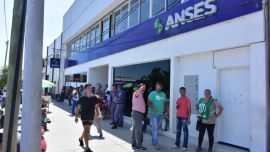Despite Argentina’s partial economic recovery in the wake of the coronavirus pandemic, more than 40 percent of the population is still living in poverty, according to official data.
Poverty reached 40.6 percent in the first half of 2021, reaching 11.7 million people in urban agglomerations across the country, the INDEC national statistics bureau reported Thursday.
Extreme poverty is also on the rise in Argentina, with 10.7 percent of the population now classified as destitute.
The stark figures, published by the INDEC national statistics bureau on Thursday, underline the devastating impact of the coronavirus pandemic and the resulting economic shutdown on jobs, earnings and households across Argentina.
Despite the economy rebounding 10.5 percent year-on-year in the first seven months of 2021 – following a huge 9.9 percent slump in gross domestic product in 2020 – some 4.9 million people nationwide still cannot meet their basic food expenses and live in extreme poverty, according to INDEC.
Argentina’s economy has been in recession since 2018, but it was hit hard by restrictions imposed on the movement of people, goods and services to combat the pandemic. According to a recent estimate from the Organisation for Economic Co-operation and Development (OECD), GDP will grow 7.6 percent this year.
"With respect to the second semester of 2020, incidence of poverty registered a reduction of 0.4 percentage points in households and 1.4 points in individuals. On the other hand, in the case of extreme poverty, it showed an increase of 0.4 points in households and 0.2 points in individuals," said the bureau in its report.
In the first half of 2020, poverty reached 40.9 percent of the population. In the second half of the same year, it reached 42 percent. The latest rate is a drop of 1.4 percentage points.
“Poverty is at 40, 42 percent. The increase is explained by the fall of the middle class, which has been even more affected by the pandemic. The middle classes are losing in Argentina. For its part, the State assists the most precarious sectors, and sometimes, the lower middle class that is on the edge of poverty,” the director of the UCA Social Debt Observatory, Agustín Salvia, told Perfil.
Wider picture
INDEC’s poverty index is based on surveys of 31 of Argentina’s largest urban conglomerates and not on the entire population of 45 million people, but it offers a wider picture that can be projected out to the whole country.
Taking the poverty rate of 40.6 percent, for example, and extending it nationwide would equate to 18.5 million people.
Worryingly, poverty is disproportionately affecting the young. According to INDEC, more than half (54.3 percent) of people aged under 14 are poor and 16.6 percent are considered destitute. In the 15 to 29 age group, more than 48 percent live in poverty.
At the regional level, disparities were also observed in specific areas. In Greater Buenos Aires – the nation’s most populous region – and Patagonia, a reduction in poverty and indigence was observed, though in the rest of the regions it rose. The greatest levels were recorded in the northeast (45.4 percent) and northwest (44.7 percent) of the country.
Argentina’s unemployment rate was 9.6% in the second quarter of 2021, down 3.5 percentage points year-on-year.
– TIMES/NA/AFP





















Comments